There were two Russian Revolutions in 1917. These were serious events which resulted in the step down of TsarÃÂs dynasty in the February Revolution and stepped up of LeninÃÂs communist party in the October Revolution. The two keys persons who played important roles in these events were: the last Tsar Nicholas II and Vladimir Lenin from the Bolshevik Party.
Because of Tsar Nicholas II selfish attempt to restore frame after the humiliating defect in the Russo-Japanese war, Tsar Nicholas II at his own decision alleged to the United Kingdom and France as the Triple Entente in fighting against Germany in 1914. He also hoped that the war against the common external enemy, Germany, could bring together different ethnic people groups in the vast Russian territory. The Tsar was wrong in diverting peopleÃÂs internal frustration to external affair. The Russian army were ill-equipped and suffered heavy casualty and loss of million of youth.
The war also used up lots of national resources and destroyed home economy.
The Tsar Nicholas II led a luxurious life in the palace, waged wars outside but neglected the suffering people within his country. The Tsarina, Alexandra of German legacy, was left in power while Nicholas was engaged in war with the German as the Commander-in-chief. The Tsarina did not gained peopleÃÂs acceptance since she was German which led people to be suspicious of her loyalty to Russia.
The Tsar had weak leadership and gained no authority of the government. He neglected the socioeconomic suffering of the poor people. The stubborn Tsar neglected the advice of the Duma, the state parliament and declined all sort of democratic reform. The Tsarina, who was suspected by Russian people, had actual power. There were no competent ministers in the ruling dynasty. The hungry people determined the autocracy as unfit to ruleThe harsh winter in 1916 and 1917 led to poor harvest and low productivity with a result of widespread famine and sacking economy. War-stricken, poverty-devastation, widespread famine and unemployment caused people to have dissatisfaction and social unrest. Many soldiers returned from the battle and joined the mobs against the government.
The country was divided into different classes each of which struggled for their interest. The underprivileged proletariat class was the peasants and the labor. Large amount of unskillful peasants migrated into the city in attempt to seek a better livelihood. They not only lost their land in the village but also found disappointment in the city. The workers suffered from long working hours and low wage and poor living conditions in overcrowded urban city. The uncoordinated industrialization resulted in sudden expansion of dissatisfactory urban population. This added to the large population of unemployment. The small amount of middle class, the bourgeoisie, was the educated and the professionals. The even smaller but over-privileged upper class and capitalists held most of the resources of the country. All the uneven numbers of the classes added to the resentment among the people and social instability. Strikes, demonstrations, mobs and looting devastated the state order and economy.
The Romanov dynasty was pulled down by unorganized riots by the dissatisfactory people. The riots started in Petrograd, an important industrial city now known as St Petersburg, spread to the entire country and brought the country into chaos. Many soldiers and civil polices refused to shoot the bare-handed civilian protesters and joined the people to fight against the authority. The government collapsed and Tsar Nicholas was forced to abdicate his reign. The Romanov dynasty ended in these events known as the February Revolution.
A provisional government was set up after the abdication of the Tsar. This provisional government was a weak coalescence of two parties: the moderate reformists headed by Alexander Kerensky and the left winged Petrograd Soviet. The new provisional government was weakened by the fierce struggle of power between the moderate and the left extremist.
Vladimir Lenin was able to smuggle back from exile to Russia with the help of the Germany. He was able to exploit the working class in the struggle for better livelihood. He led the left-winged Bolshevik party and sough power by his left-winged Marxist ideology which attracted many underprivileged workers.
The Bolshevik Party, led by Lenin, claimed genuine representation of labor welfare. The effective use of slogans in campaigns like ÃÂEnd the WarÃÂ, ÃÂEnd the AutocracyÃÂ, ÃÂPeace, Bread and LandÃÂ, ÃÂLand to peasantsÃÂ aroused anti-monarchy spirit and aspired revolution spirit. They gradually grew in people acceptance and power and finally overthrew the ineffective moderate Provisional government and gained sovereignty of Russia. A new communist government led by Lenin was established in the October Revolution.
It is justified that the people have the right to protect themselves and build up an effective government who represents themselves and acts in their interest. The ruling Romanov dynasty should come to an end and must be replaced because it was weak, incompetent and corruptive. The participation in the World War had added tremendous suffering to the poverty and famine of the people. The whole government failed to operate and the country came into chaos. It is justified that the Tsar reign and the Romanov dynasty were toppled in the February Revolution.
However, these socioeconomic unrests can be easily abused and exploited. The Russian political turmoil gave opportunities to left-winged Lenin to seek power. The left-winged opponents who promised to bring peace, bread and land would gain blind support among people regardless of their genuine motive and ability to do so. The Bolshevik regime established in the October Revolution did not seem to be the answer to all sorrow and suffering of the Russians. As later history tells us that the Lenin regime paved the way for USSR, during which million of people were also killed by famine, economic slowdown and political persecution, especially under the cruel dictatorship of Starling.
BibliographyStudyworld. (n.d.) Roots of Russian Revolution. Fromhttp://www.studyworld.com/newsite/ReportEssay/History/European%5CRoots_of_Russian_Revolution-321552.htmJohn Clare (n.d.) Why Was There A Disaster in1917. Fromhttp://www.johndclare.net/Russ3.htmWikipedia. (n.d.) February Revolution. Retrieved January 3, 2008, fromhttp://en.wikipedia.org/wiki/February_RevolutionWikipedia. (n.d.) October Revolution. Retrieved January 10, 2008, fromhttp://en.wikipedia.org/wiki/October_Revolution
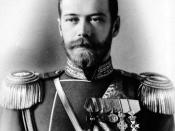
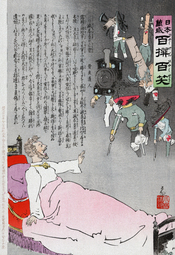
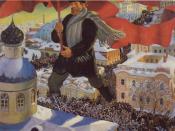
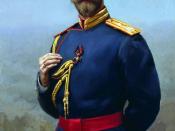
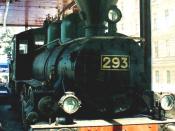
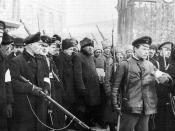
Regarding your resources
-you should try not to use wikipedia in your cited materials.
-if you find something useful on wikipedia try googling it and finding a more credible website, as you advance in school teachers may become less lenient and wont accept wikipedia as a legitimate source
0 out of 0 people found this comment useful.